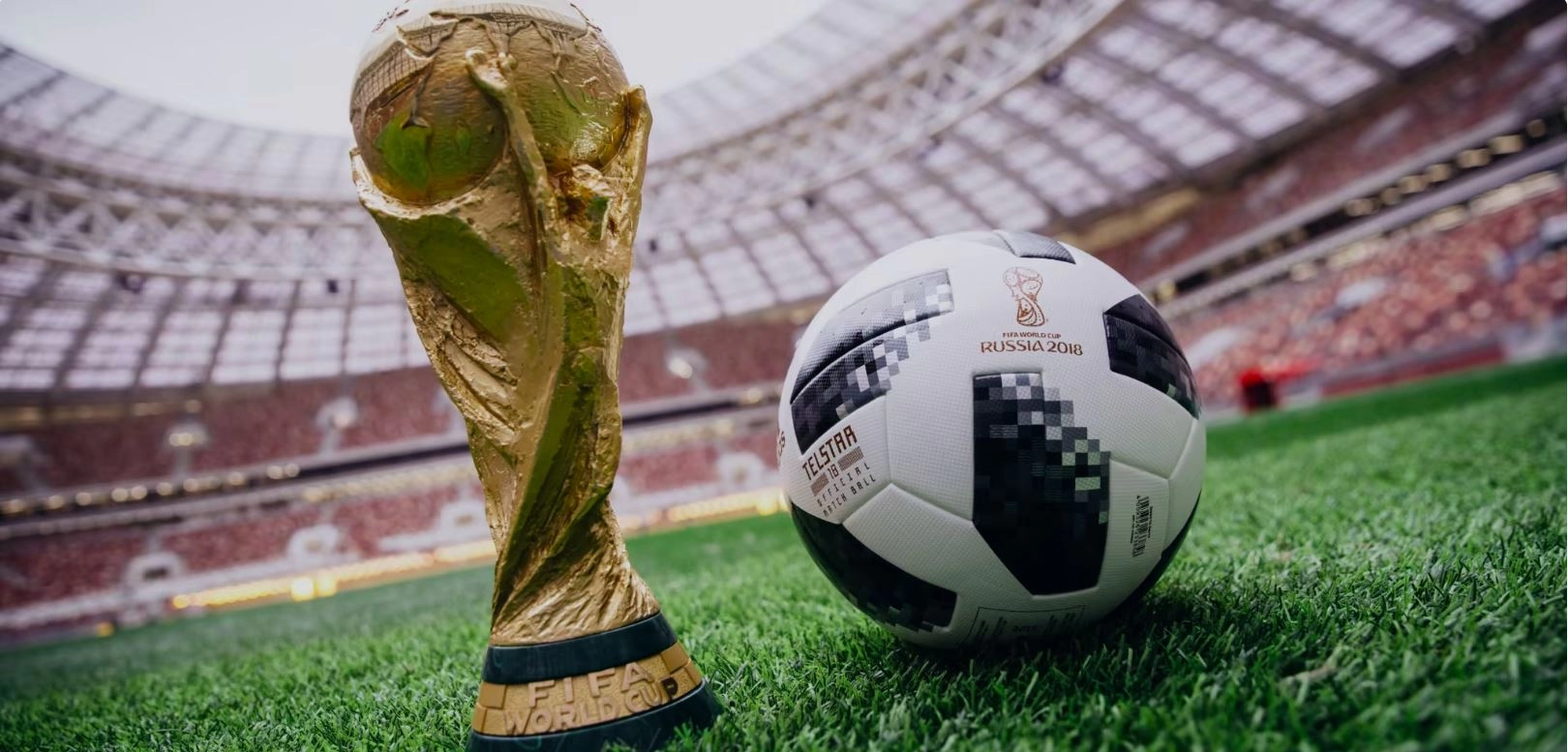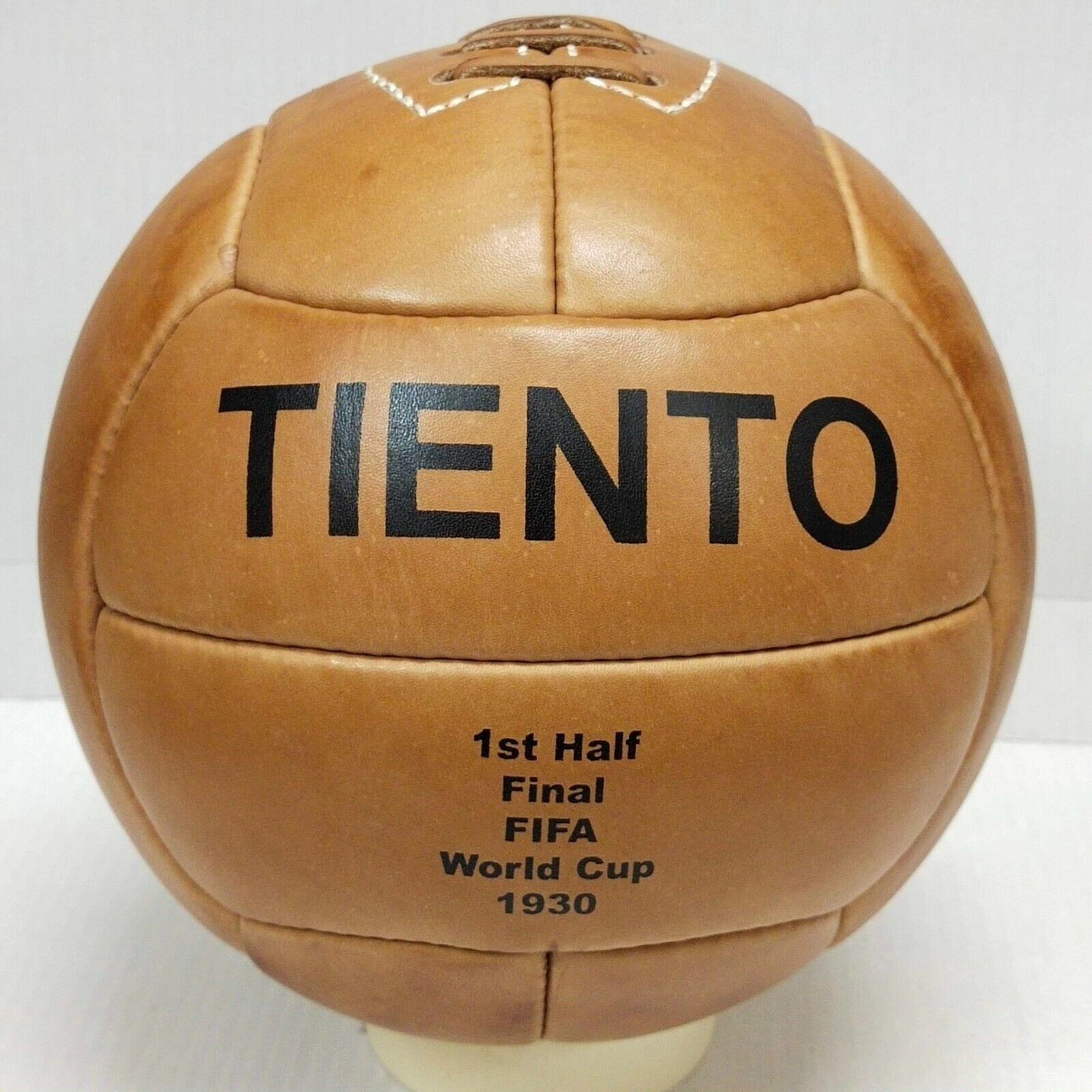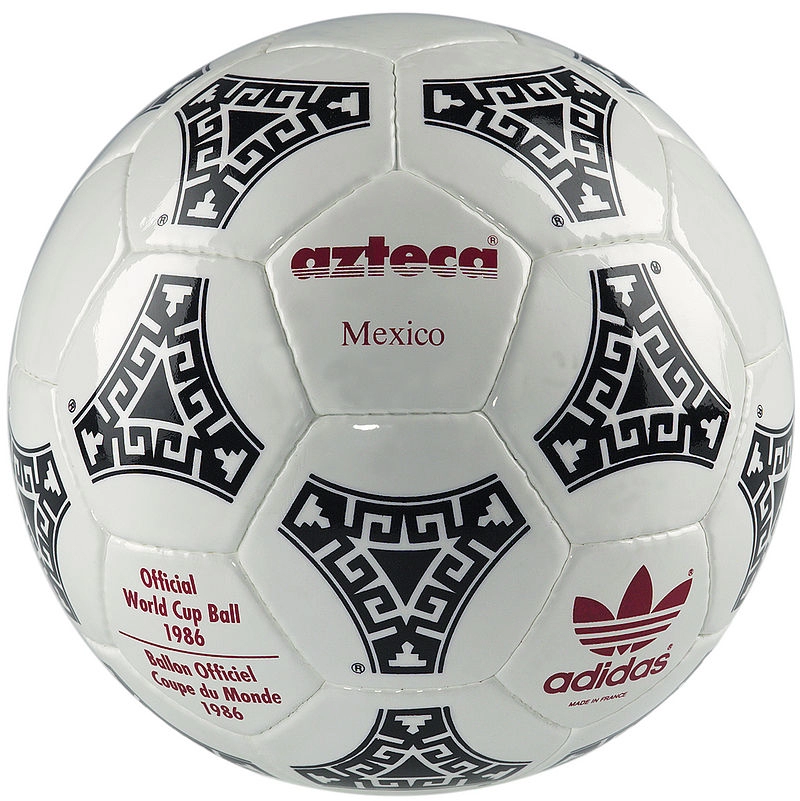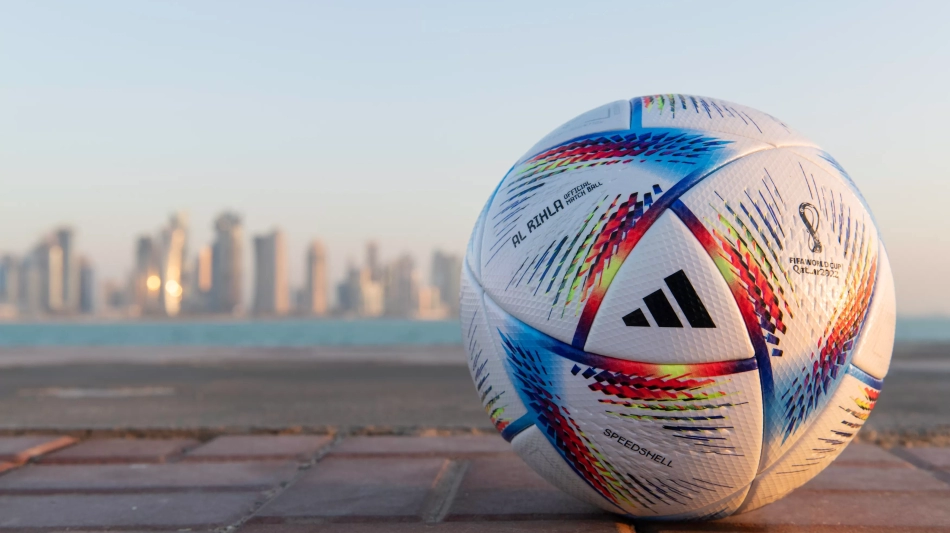The FIFA World Cup balls are the most iconic and best-known balls in football history, and one of the most important events in the buildup to every World Cup nowadays is the unveiling of the tournament's official ball.
For the World Cup in Qatar, Al Rihla was revealed by Adidas as the Official Match Ball earlier this year. According to FIFA, Al Rihla is the 14th successive ball that Adidas has created for the FIFA World Cup and it is designed to support peak game speeds, as it travels faster in flight than any ball in the tournament’s history.
Al Rihla, which means "the journey" in Arabic, is inspired by the culture, architecture, iconic boats and flag of Qatar. The bold, vibrant colours set on a pearlescent background represent the FIFA World Cup host country and the ever-increasing speed of the game.
Designed from the inside out using data and rigorous testing at Adidas labs, in wind tunnels and on the pitch by football players themselves, Al Rihla provides the highest levels of accuracy and reliability on the field of play, partly due to its new panel shape and surface textures.
The ball was designed with sustainability as a priority as it is the first FIFA World Cup ball to be made exclusively with water-based inks and glues.
Besides Al Rihla, each World Cup ball has always told a story. For example, Russia 2018’s Telstar 18, which had an embedded near-field communication (NFC) chip, pays homage to the first World Cup ball made by Adidas in 1970, while for Brazil 2014, the Brazuca describes the national pride in the Brazilian way of life.

Historically, football balls have undergone a tremendous transformation from balls made from different materials, including stitched-up cloth, animal skulls, and cow bladders, among others, in ancient times, to modern-day balls made of polyurethane-coated textiles with an NFC chip.
Balls started looking more presentable, and football consequently became more enjoyable, starting in 1855 when Charles Goodyear designed and built the first vulcanized rubber football balls—19 years after he patented the vulcanized rubber.
The rubber balls had increased bounce ability, which made them easier to kick, and they were also able to resist moderate heat and cold, unlike the previous types. Despite the significant improvement, there was no agreement on specifications, and the balls were made by different manufacturers as they saw fit.
In a bid to create a standard guiding the production of balls, the English Football Association in 1872 ruled that the ball "must be spherical with a circumference of 27 to 28 inches" (68.6 cm to 71.1 cm). This ruling was universally adopted and it remains, till today, FIFA's regulation for official match balls at World Cup tournaments. For the weight, FIFA ruled that World Cup balls must be weighed between 420 g and 450 g.
Prior to 1970, FIFA World Cup balls were mostly provided by the hosts from local suppliers. Records indicate a variety of models being used within individual tournaments and even, on some occasions, individual games.
For example, for the 1930 World Cup, two different balls were used—the Tiento and the T-model—while for the 1962 tournament in Chile, different balls were used in all 32 matches played, with two different balls used in the opening match—one provided by the host as the official ball (used in the first half) and the other, which was brought in from Europe for the second half.

Over time, FIFA asserted its authority over the choice of ball used, and since 1970, Adidas, FIFA’s official partner, has supplied match balls for every tournament.
Between 1930 and 1950, handmade balls, made of leather with a lace of the same material used to stitch the panels, were used at the World Cups. Colours were majorly brown—to identify them during the snow—and there were no major differences in the balls used at the different tournaments during the period, as each of them was made of the same materials and in the same way, though the patterns and designs were slightly altered.
Each of the balls, however, had its own traditional name. The T-model and Tiento were used in 1930, while Federale 102 was for the 1934 tournament in Italy. For the 1938 event, the Allen ball, which was very similar to the Federale 102, was used. The ball, made by the Paris-based company Allen, was the first to have the manufacturer's name emblazoned on it, with 'Allen Officiel' conspicuously scripted on the sides.
1950 witnessed the significant transition from the "laced" ball to the "lace-less" with the introduction of the Superball Duplo T. Although, the lace-less design had been invented at the beginning of the 1930s, it was, however, only adopted by FIFA at the tournament held in Brazil.
The colour of the ball was changed from the usual dark brown to an attractive yellowish or orange at the 1954 tournament in Switzerland, while the 1958 Top Star ball was the first ball to be treated with a waterproofing wax, making the balls more water resistant.
The Crack ball was used in 1962 in Chile while the Slazenger, which provided excellent sphericity, was the official tournament ball when England hosted and won in 1966.
The Adidas era began in the 1970s with the introduction of the Telstar Durlast—a combination of television and star. Given that the World Cup in Mexico was the first to be broadcast on TV worldwide, the white and black-coloured ball was expected to be more visible on the black-and-white TVs of that era.
The Telstar Durlast was so successful that it was retained for the 1974 tournament. For the 1978 tournament in Argentina, Adidas launched a brand new model with a revolutionary design: the Tango, which was inspired by the classic dance of Argentina. The design consisted of 20 black and curved triangles, each one printed onto the white-coloured surface of each hexagonal panel.
Between 1978 and 1994, there was no major revolution in the production of the balls, although Adidas started naming and decorating the balls in honour of the host nations, starting with the 1986 FIFA World Cup, which was named Azteca in honour of the Mexicans.

While the world witnessed a fusion of smart technology and the ball with the Telstar 18, the last cannot be, however, said to have been heard about the future of the ball.


